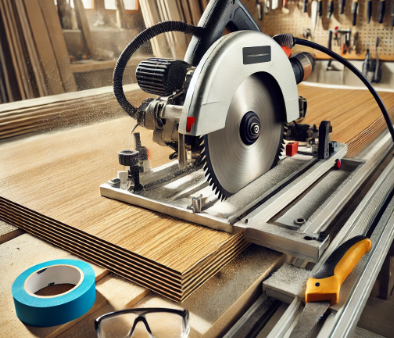Cutting HPL Exterior Panels: Helpful Tips and Tricks for the Best Result

Cutting HPL Exterior Panels: Helpful Tips and Tricks for the Best Result
HPL (High Pressure Laminate) exterior boards are a popular material for outdoor applications such as cladding, balustrades and garden furniture, thanks to their durability and weather resistance. Cutting these boards correctly is essential to prevent damage such as splintered edges and ensure a tight finish. Whether you are a do-it-yourselfer or an experienced professional, here are some handy tips and tricks to ensure you cut HPL exterior boards accurately.
1. Use the right tools
Choosing the right tool for sawing HPL boards is crucial for making splinter-free cuts. A fine-toothed saw blade and a suitable cutting tool will ensure the best results.
- Circular saw: A circular saw with a carbide blade of at least 60 teeth is ideal for cutting HPL boards. This ensures a clean and smooth cut.
- Jigsaw: This can be used for making cut-outs or minor adjustments, but use a fine-toothed saw blade suitable for laminate or plastic.
- Panel saw: For larger boards, a panel saw with a guide rail is the best choice for making straight and precise cuts.
2. Saw blade selection
The type of saw blade plays an important role in the end result. Always choose a saw blade designed for laminate or plastic.
- Carbide saw blade: A saw blade with a high tooth density (at least 60 teeth) offers a neat, splinter-free cut. This also helps prevent ragged edges.
- Negative tooth angle: Saw blades with a negative tooth angle are often the best choice for circular saws because they ensure less chipping at the top of the board.
3. Provide a stable workplace
It is important that the HPL board is properly secured during sawing to minimise movement and vibration. This not only prevents inaccurate cuts, but also reduces the risk of splinters.
- Use clamps to securely fasten the plate to a workbench or sawhorse.
- A stable surface is essential for controlled and accurate cutting.
4. Protect the saw edge with tape
A simple but very effective trick to minimise splintering of HPL boards is to use painter's tape or masking tape along the cut line.
- Apply tape on the place where you are going to cut, both at the top and bottom of the board. This ensures that the saw blade does not damage the laminate layer while cutting.
- Carefully remove the tape after making the cut to maintain a neat edge.
5. Sawing from the right side
When sawing HPL boards, it is important to know how to position the board to avoid splintering.
- Circular saw: Always saw with the visible side down, as the teeth of the saw blade move up and finish the underside neatly.
- Jigsaw: Saw with the visible side up, as jigsaws usually work with teeth pointing downwards.
6. Slow and even cutting
To avoid damage, it is important not to rush and cut evenly.
- Cutting speed: Saw at a constant, even speed and do not apply too much pressure. Cutting too fast can lead to overheating of the saw blade and splintered edges.
- Jigsaw: When using a jigsaw, it is important to work slowly, especially on curves, to avoid cracks in the laminate layer.
7. Post-processing of saw cuts
After sawing HPL exterior boards, the edges can sometimes be a bit sharp or rough. Smoothing the edges ensures a professional finish.
- Sandpaper: Use fine sandpaper (180-grit or higher) to gently smooth the edges.
- Milling machine: For an even tighter finish, use an edge router to neatly round off the edges.
8. Safety first
Cutting HPL panels releases fine dust particles that can be harmful if inhaled. In addition, small splinters can fly around. Always make sure you have the right protective equipment.
- Wear a dust mask and ensure good ventilation in the work area.
- Use a safety goggles to protect your eyes from flying splinters.
9. Special tips for professional cutting quality
- Double cut: For very thin HPL boards, you can apply a double cut by first making a shallow cut and then cutting all the way through. This reduces the risk of splinters.
- Use a guide rail: For longer cuts, you can use a guide rail to ensure your cut is perfectly straight.
Conclusion
Cutting HPL exterior boards is a precise task that requires the right tools and techniques. By applying these handy tips and tricks, you can ensure your cuts are clean and splinter-free, with a professional finish. With the right preparation and tools, cutting HPL boards will be a lot easier, whether you're doing a small job or a big project.
With this knowledge, you will be ready to cut your HPL panels accurately and efficiently and bring every project to a perfect result!